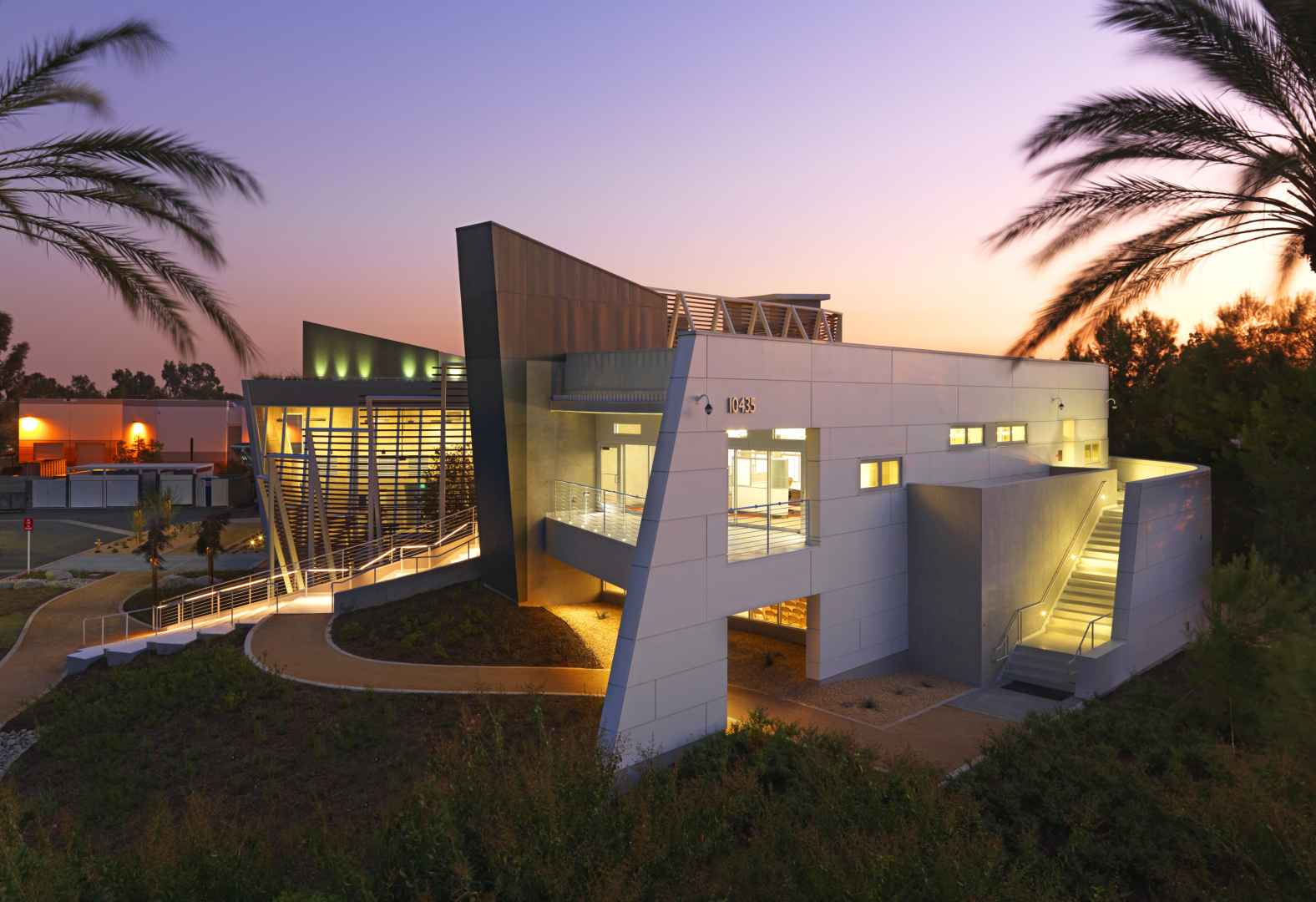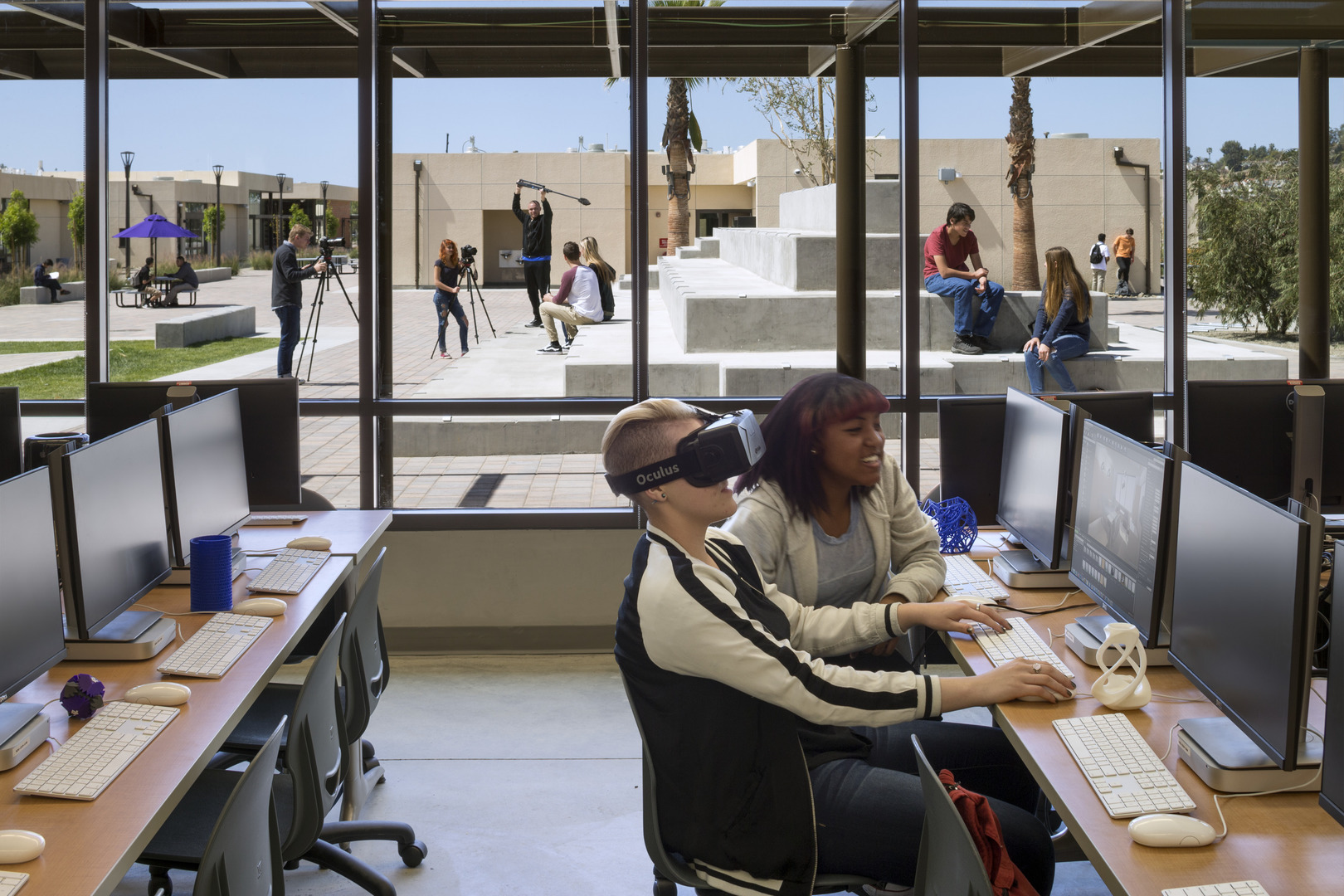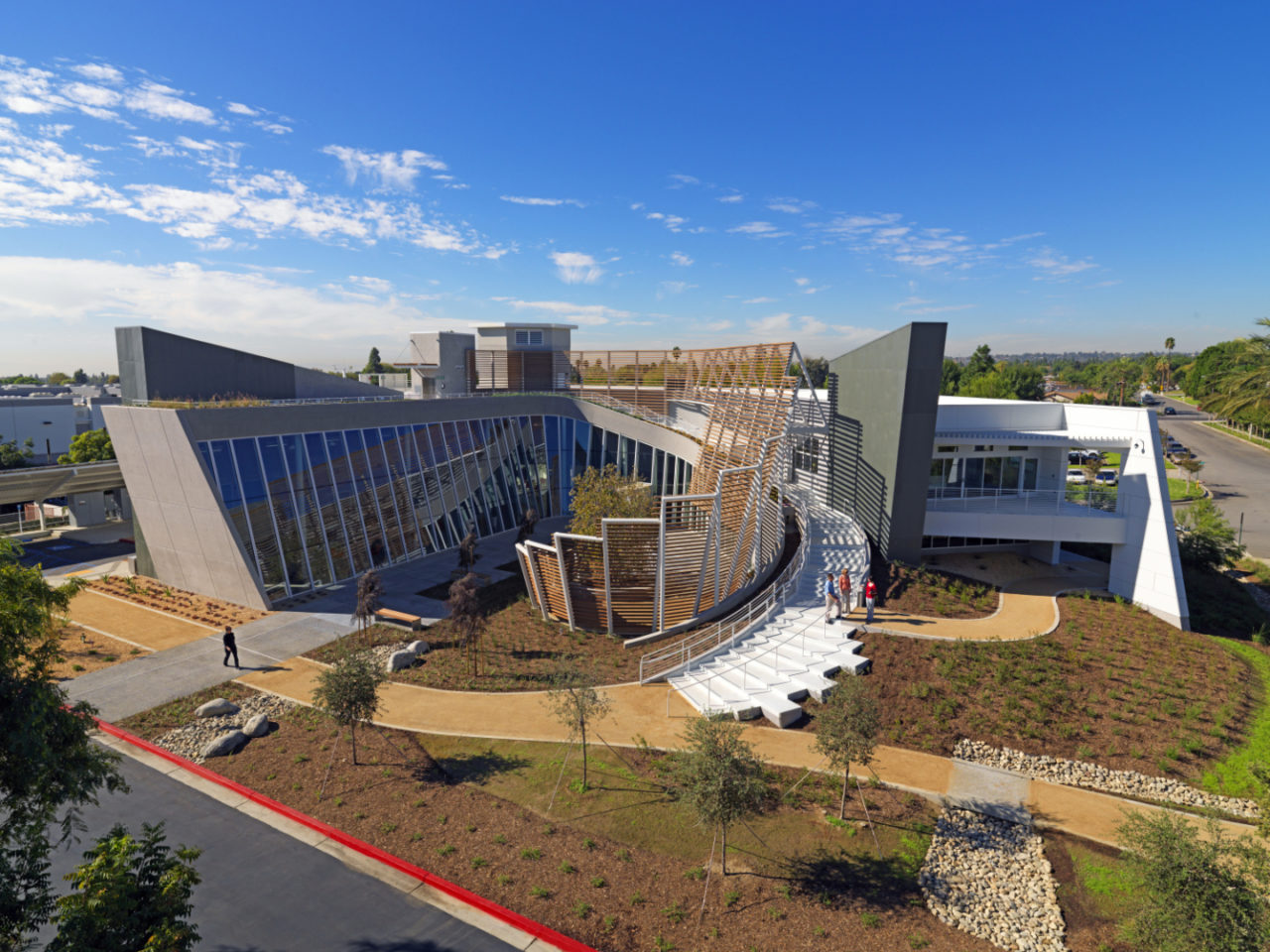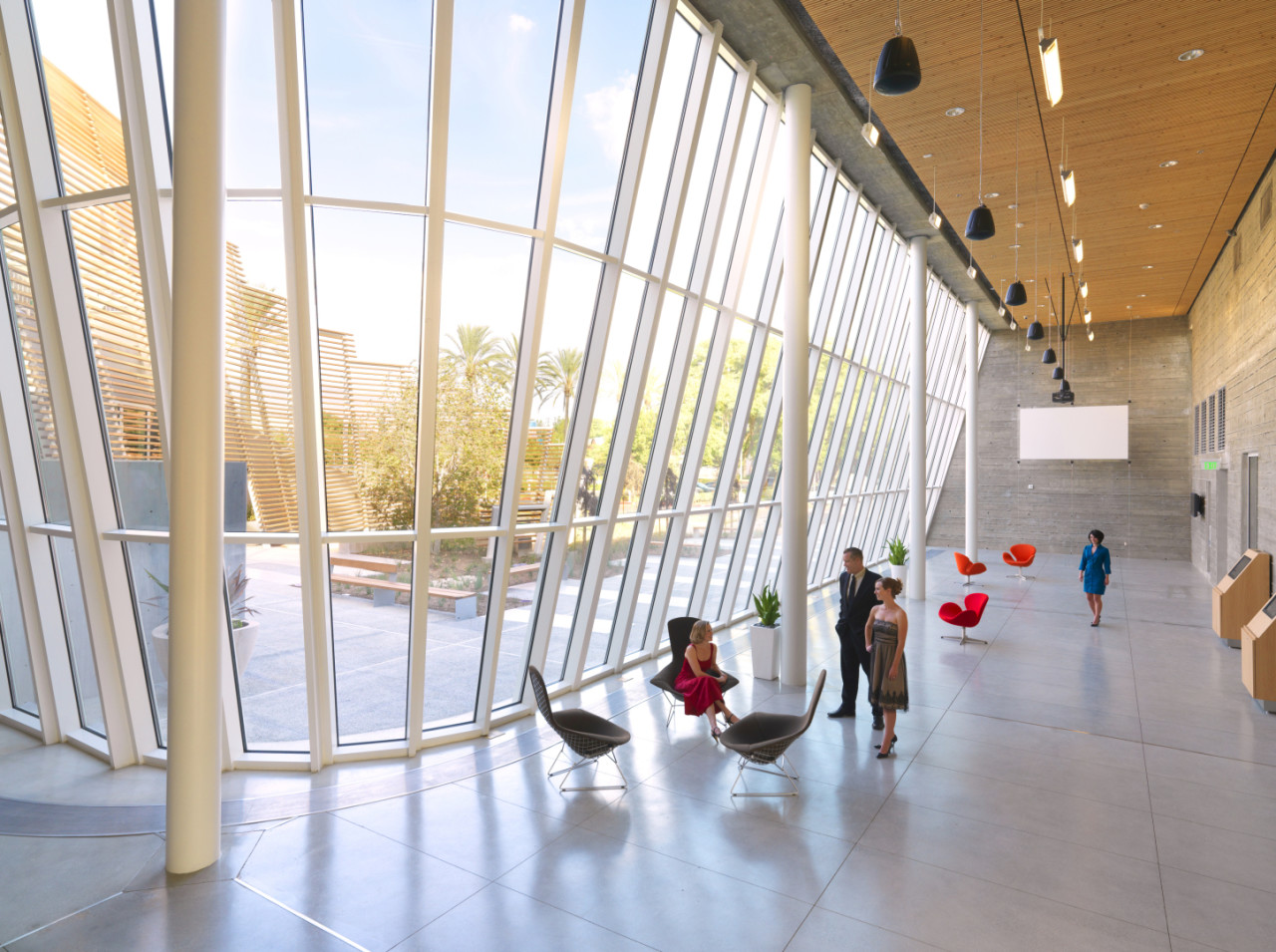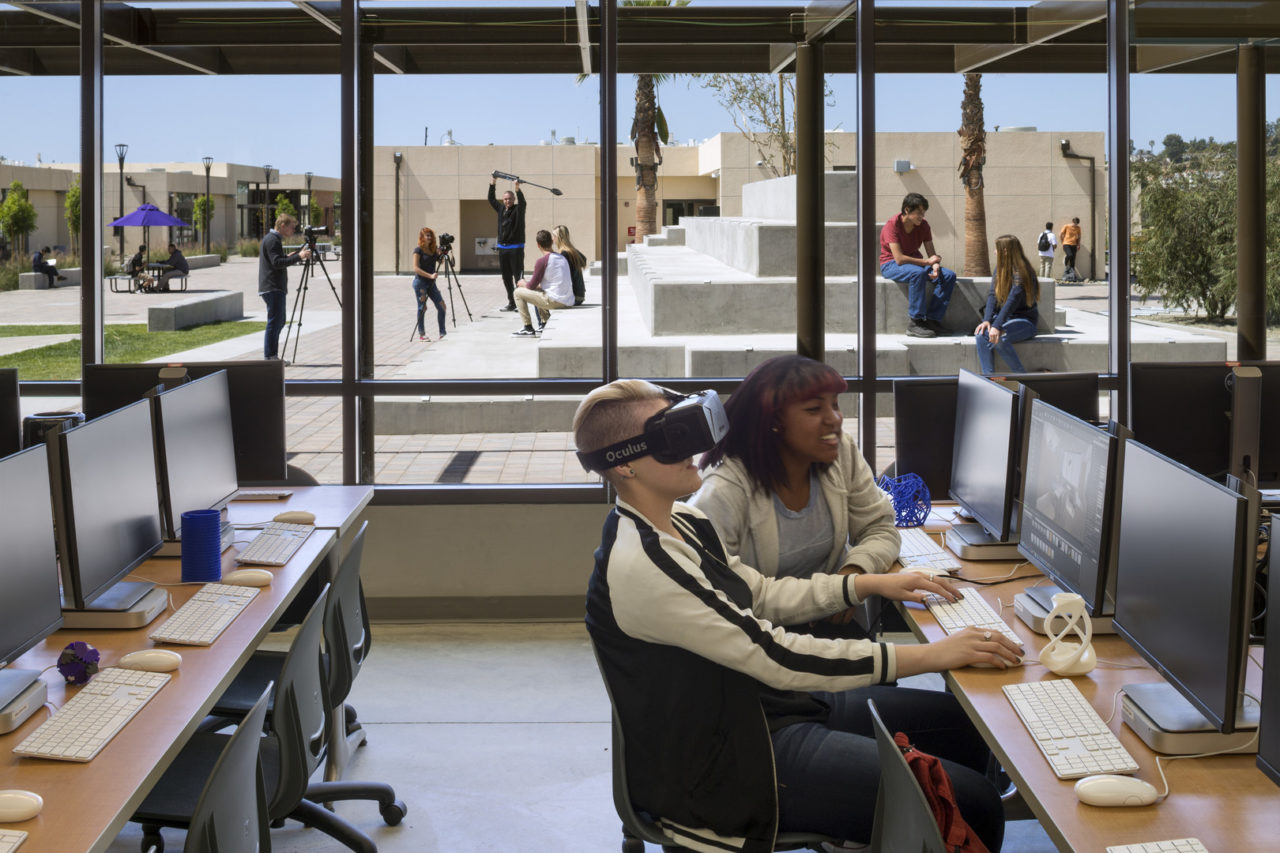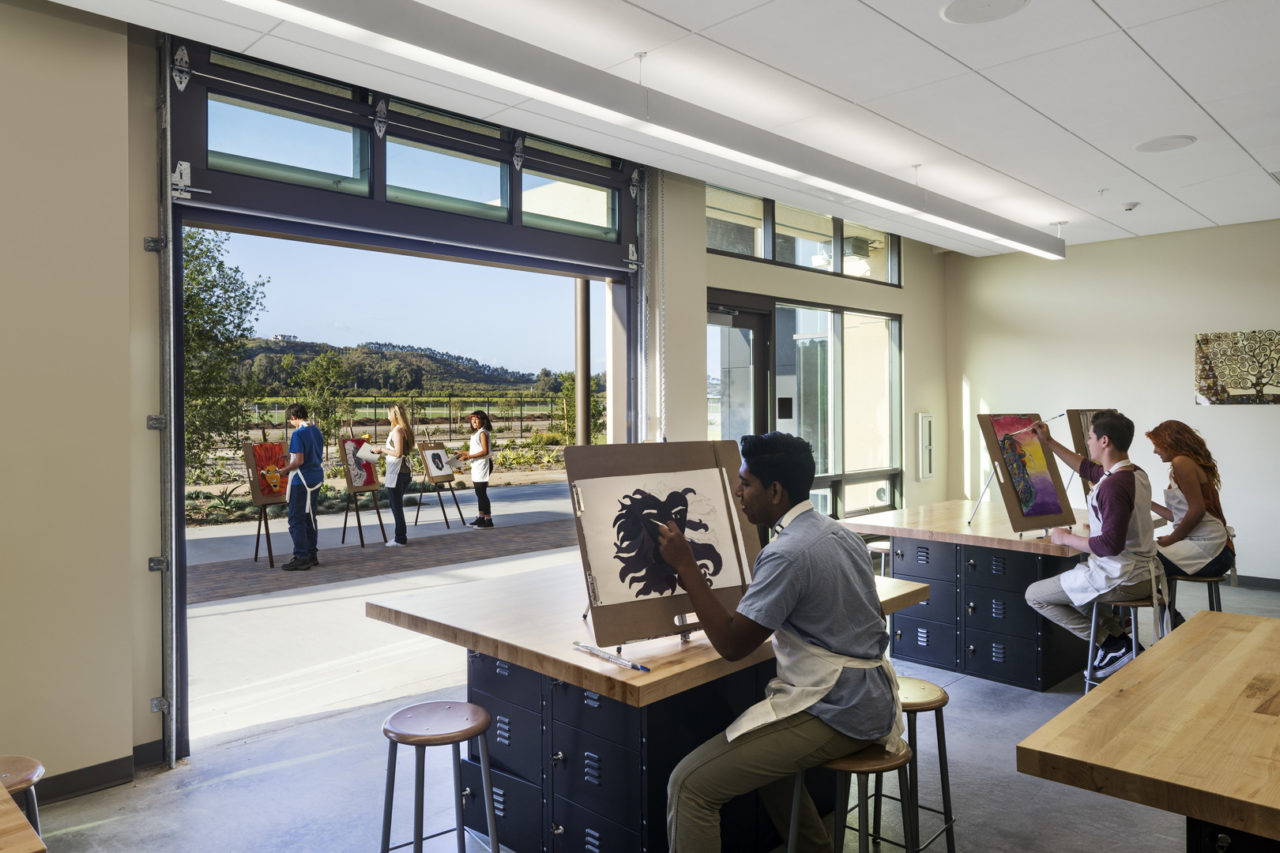The United States is a technologically rich county, and our civic buildings reflect that. From digital information kiosks and mobile workstations to advanced ventilation systems, the smart building solutions architects implement in public buildings help communities make the most of government-provided resources. When creating these buildings, design teams, including those at HMC Architects, take advantage of what’s called Environment-of-Things (EoT) technology to help improve building operations and reduce energy usage.
The EoT allows design teams to use technology to maximize energy efficiency in public buildings while also creating spaces that users find comfortable and attractive. By partnering with HMC Architects to integrate EoT technology into your design, you’ll reduce your building’s carbon footprint, decrease operational costs, and support the needs of your community.
What is the Environment of Things?
The EoT is a complex network of smart building solutions that are directly informed by climatic and environmental conditions. In other words, environmental factors, such as nature’s elements and the ways in which people use a building help dictate a building’s design.
While architects always focus on how technological innovations can improve design, the EoT allows us to focus additionally on the ways in which technology can be used to support sustainability goals, such as Zero Net Energy (ZNE).
EoT technology includes everything from environmental sensors that automatically close windows or doors in response to weather conditions to optimized HVAC systems that regulate temperature based on predictive weather data. Although similar to the Internet of Things (IoT) in that it makes use of innovative technology to regulate climatic conditions in the building, EoT technology differs a number of ways. Understanding the differences will help you identify the best smart building solutions for your next project.
Why Environment-of-Things Technology Matters
Global energy consumption is increasing. In May 2016, using 2012 as a benchmark, the U.S. Energy Information Administration projected that global energy generation will increase 48 percent by 2040. We know today that some of that growth may be attributed to the IoT and our reliance on smart technologies.
IoT technologies, such as smart locks, sensor-based security systems, and real-time user tracking, increase a building’s carbon footprint. While there are some energy-efficient IoT technologies, including smart bulbs that adjust output based on a room’s lighting needs, as a whole, IoT is less energy-efficient than the EoT. Therefore, focusing solely on IoT technologies in civic building design may prevent you from reaching your sustainability goals.
When used in tandem with existing environmental systems, EoT technology is more energy-efficient. It’s also predictive rather than reactive. For example, if you’re constructing a building in an area known for its cool oceanic winds, you can use environmental sensors and weather forecast software to track wind patterns and predict future conditions. You can then install windows that automatically open and close to naturally ventilate the building based on the predictions. This will reduce your building’s carbon footprint because you’ll use air conditioning less frequently.
EoT technology can help ensure that civic buildings meet or exceed energy-efficiency goals or mandates. However, to take advantage of its benefits, you’ll need to determine which EoT technologies to incorporate in your building based on your sustainability goals.
Create Smart Building Solutions Using Environment-of-Things Technology
A number of smart building solutions support the EoT but, with so many options, it can be difficult to choose the solutions that will work best for your project. Here are a few essential technologies to consider when designing or renovating a civic building:
- Predictive Weather Sensors. Gathering weather data is a passive strategy that allows you to implement features to more efficiently ventilate and heat or cool spaces based on environmental conditions. To further improve energy efficiency and increase user comfort, you can take a more active approach to data collection. For example, throughout Rancho Campana High School in Camarillo, California, we installed weather forecast software in addition to sensors that measure current weather conditions. The software predicts conditions two, four, and even 24 hours in advance. The HVAC system then uses the predicted data to heat or cool the building in anticipation of the coming changes, keeping interior conditions consistent.
- Night Flushing. When weather forecast software predicts hot weather, night-flushing, which purges the excess heat a building stores during the day, will cool the building, reducing the need for air-conditioning.
- Cooling Towers and Solar Chimneys. A cooling tower and a solar chimney can work separately or in tandem to cool a building. The cooling tower we designed for the Frontier Project in Rancho Cucamonga, California, cools air drawn from the outside with a cold water mist. Two solar chimneys in the building allow any hot air inside the building to escape.
- Daylight Sensors. When daylight sensors detect ample daylight, powered lights dim automatically, conserving energy and saving on energy costs. Automatic shades can also be linked to daylight sensors to keep a building cool by blocking direct sunlight during the hottest times of the day.
- Room Occupancy Sensors. Room occupancy sensors detect and predict the presence of people, and then turn lights on and off automatically as a result. In addition to reducing energy usage, the sensor’s predictive data can help you better meet the needs of users. For example, an office building’s entrance requires plenty of light and temperature regulation in the morning as people arrive and in the late afternoon as they leave. A rarely used storage room, however, won’t require as much lighting, heat, or air conditioning.
- Temperature Indicators. At Rancho Campana High School, we installed temperature indicators inside classrooms. Lights on the indicators change color based on the outside temperature. When an indicator light is red, the room’s windows and doors should be closed to keep the temperature inside stable. When the light is green, the doors and windows can be opened to let in fresh air.
- Energy Dashboards in Public Spaces. You can use the energy data you gather to educate the public and encourage building users to think about the environment as they move throughout the space. A large dashboard in a lobby might display your building’s energy use compared to the national average, for example. If visitors change their behavior based on this data, your building’s carbon footprint will be further reduced.
Smart building solutions best drive energy efficiency when you use the most accurate, localized data. At Rancho Campana High School, the climatic data pulled into the EoT system comes from a weather station located on campus. For your civic building, you could employ a similar strategy, collecting local weather data in real-time to respond to changes in the environment quickly and more efficiently.
How to Design Smart Building Solutions for Your Next Project
Smart building solutions based on EoT technology not only protect the environment but also keep communities happy and healthy. A greater exposure to the environment through views of nature, daylighting, and natural breezes allow building users to feel more relaxed and comfortable.
While the concept is easy to understand, there are challenges to implementing efficient design solutions. To create smart buildings using EoT technology requires detailed knowledge of sensor and predictive technology, and data analysis. Inexperienced players can add time and complexity to the design process. The cost of constructing a smart building can also pose a challenge. While the cost isn’t exorbitant, it is typically higher than that of a less efficient building. But the long-term cost savings can be significant. The more energy-efficient your building is, the lower your energy and operations costs.
Designing a building becomes much less complex when you work with an experienced design firm with knowledge of green building architecture and sustainable design best practices. At HMC, our goal is to create energy-efficient public spaces that are inviting and comfortable. We can help you identify the smart building solutions and EoT technologies that will empower you to respond to the social and environmental needs of your community.
To learn more about smart building solutions and the role that the Environment of Things plays in modern architecture, contact HMC Architects today.
